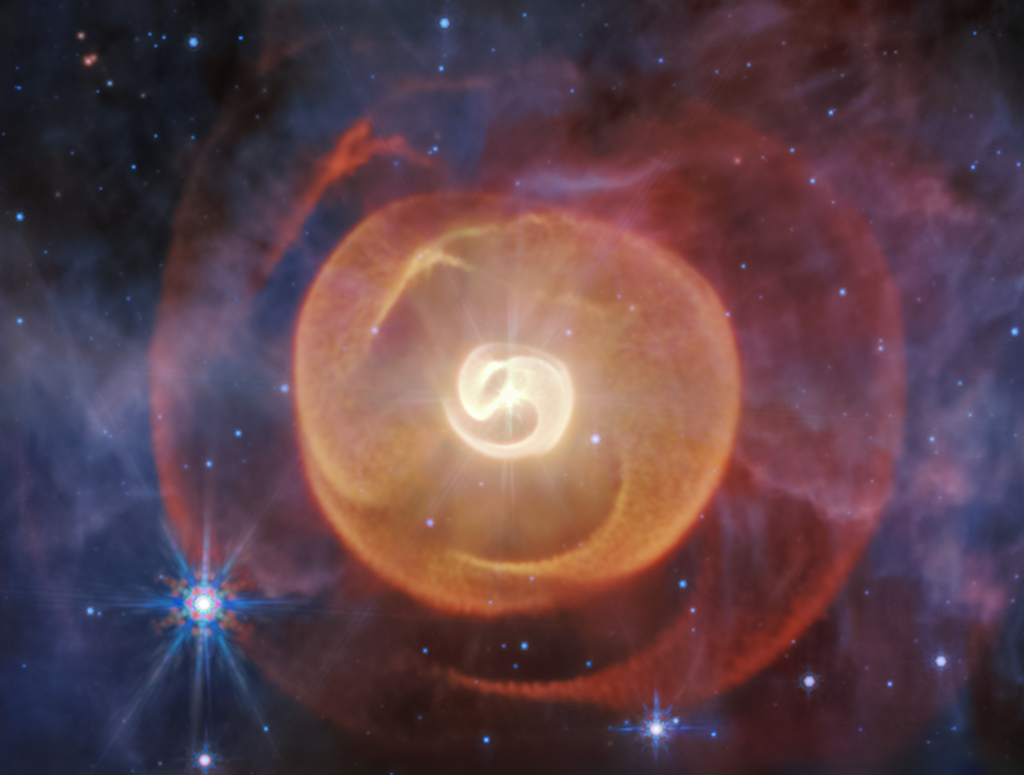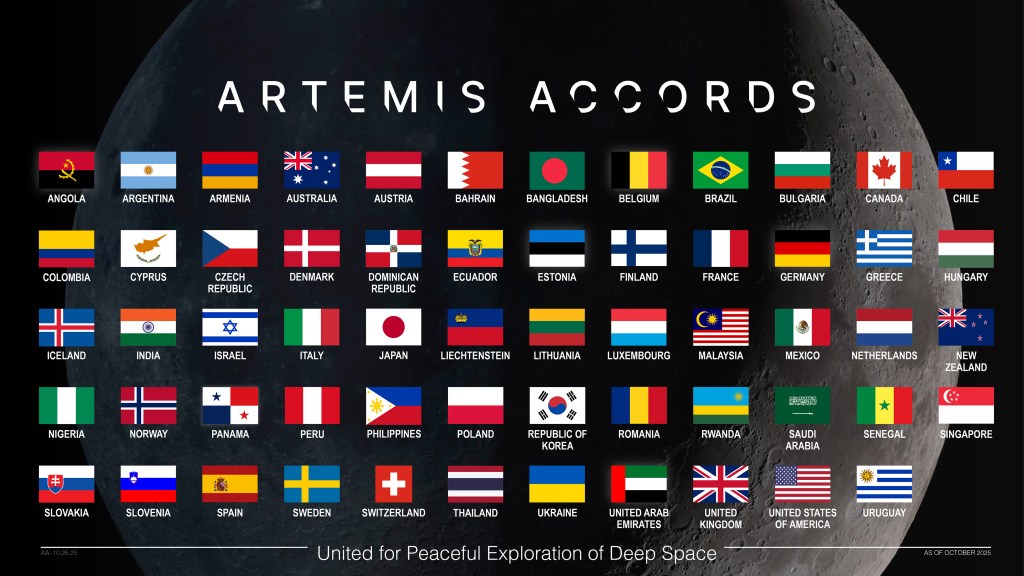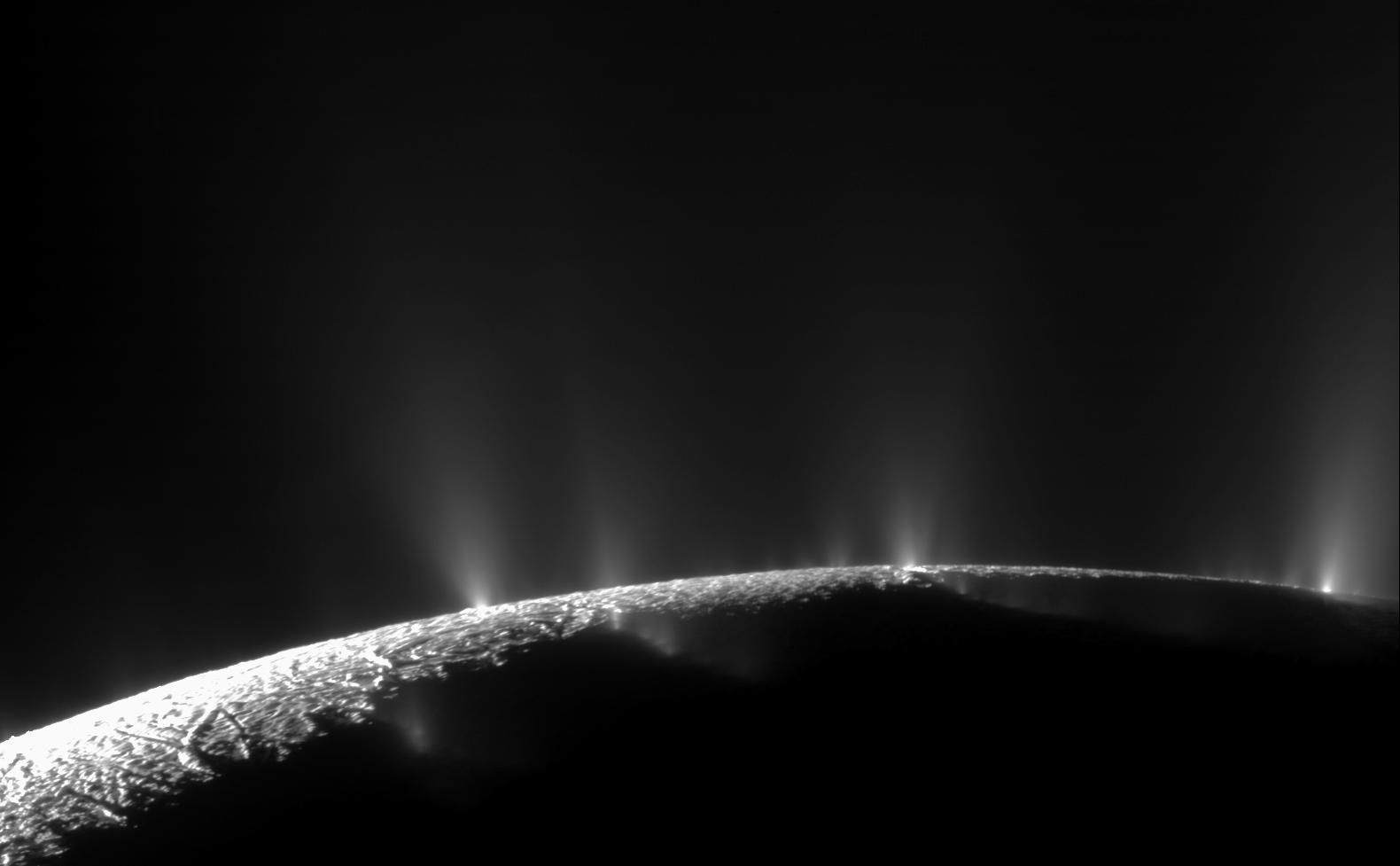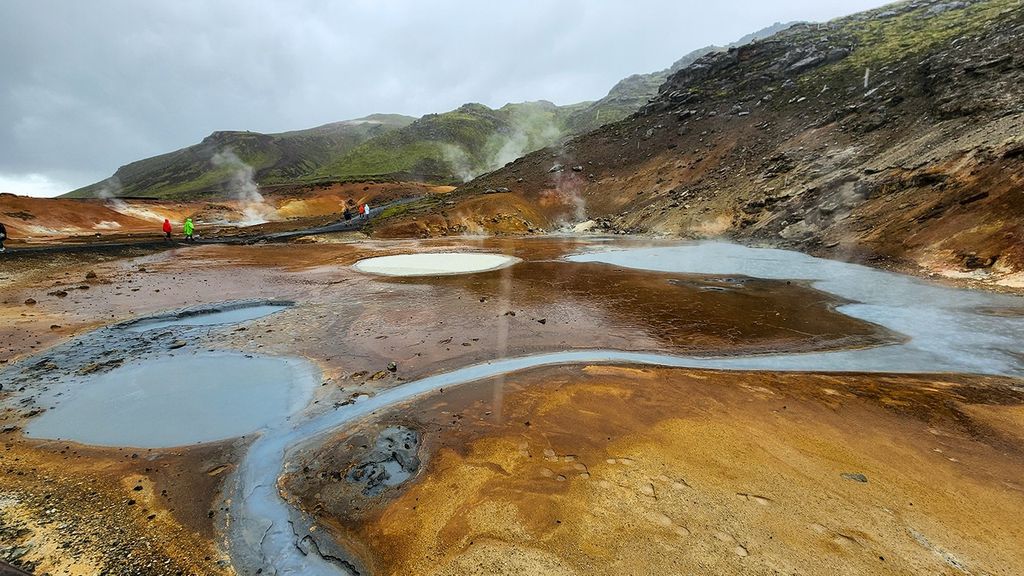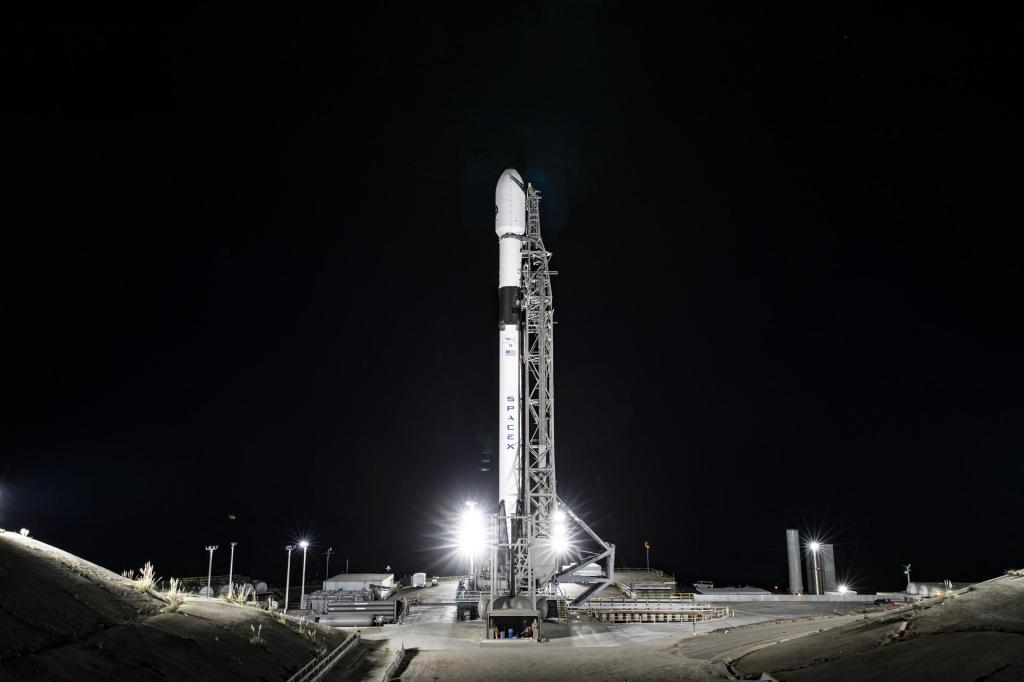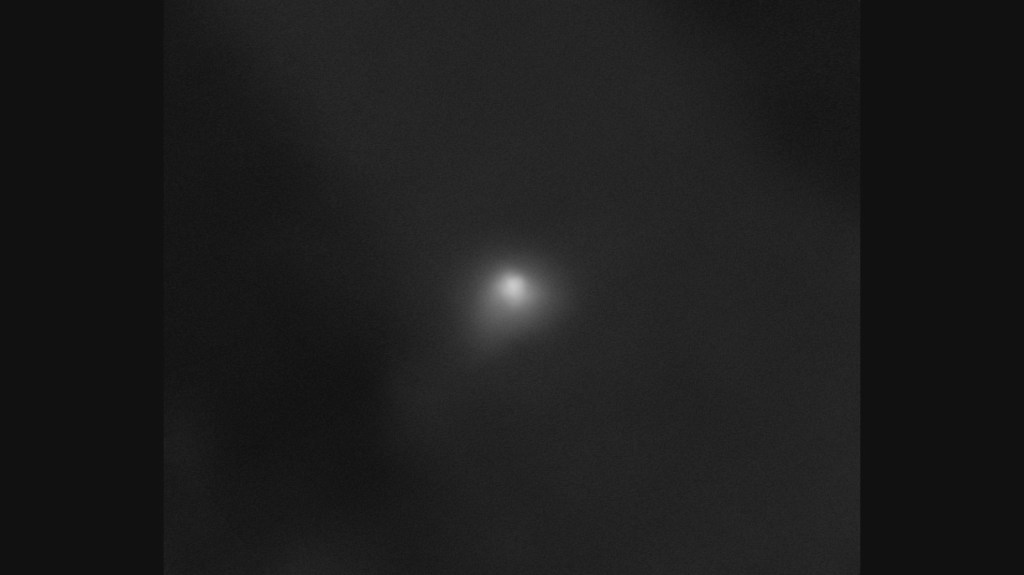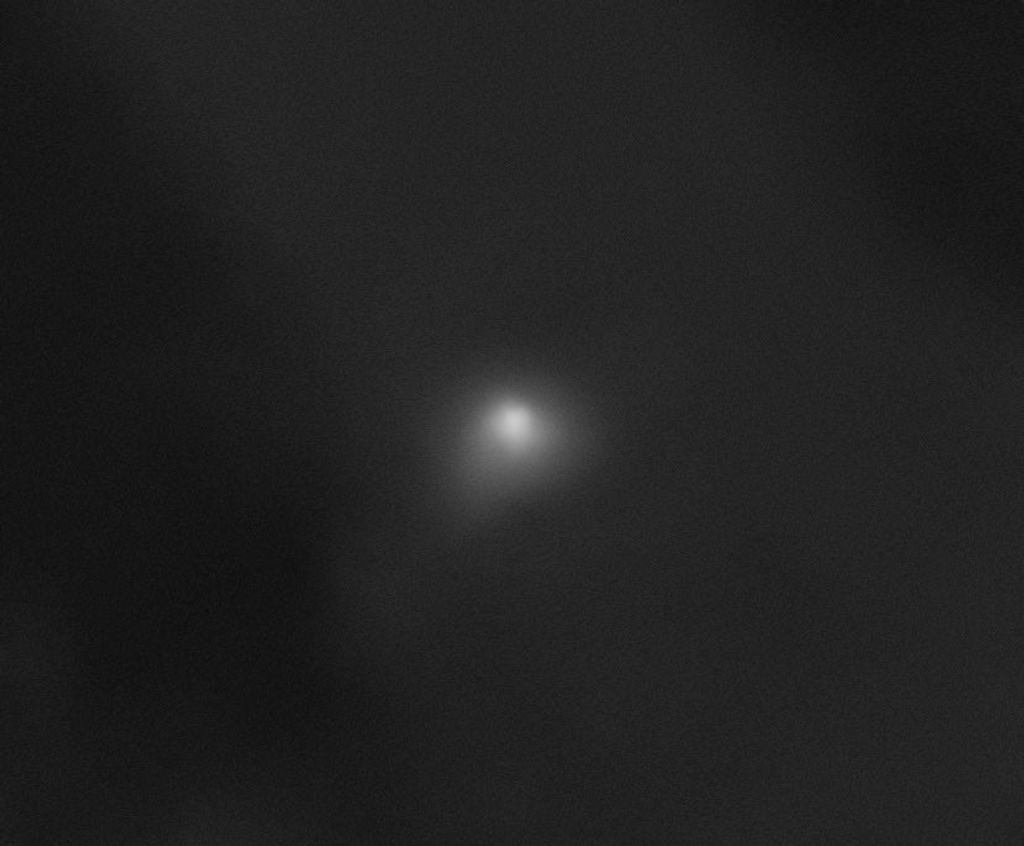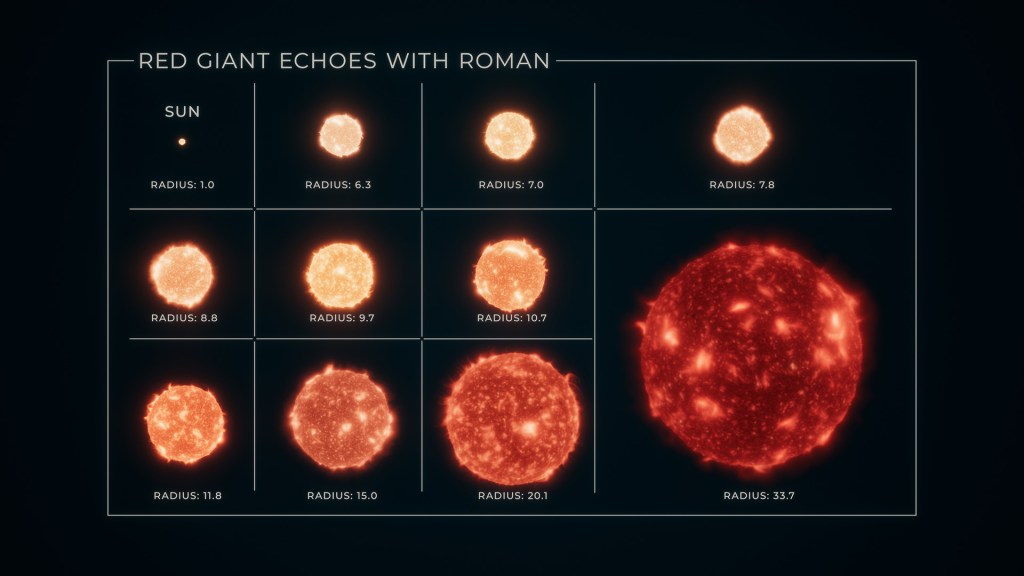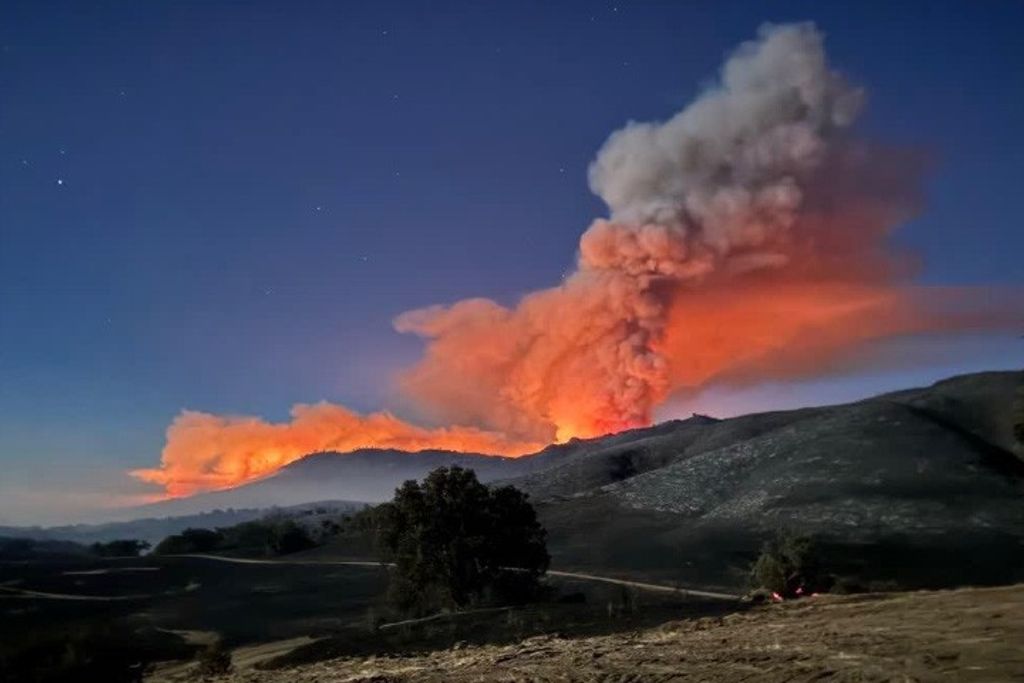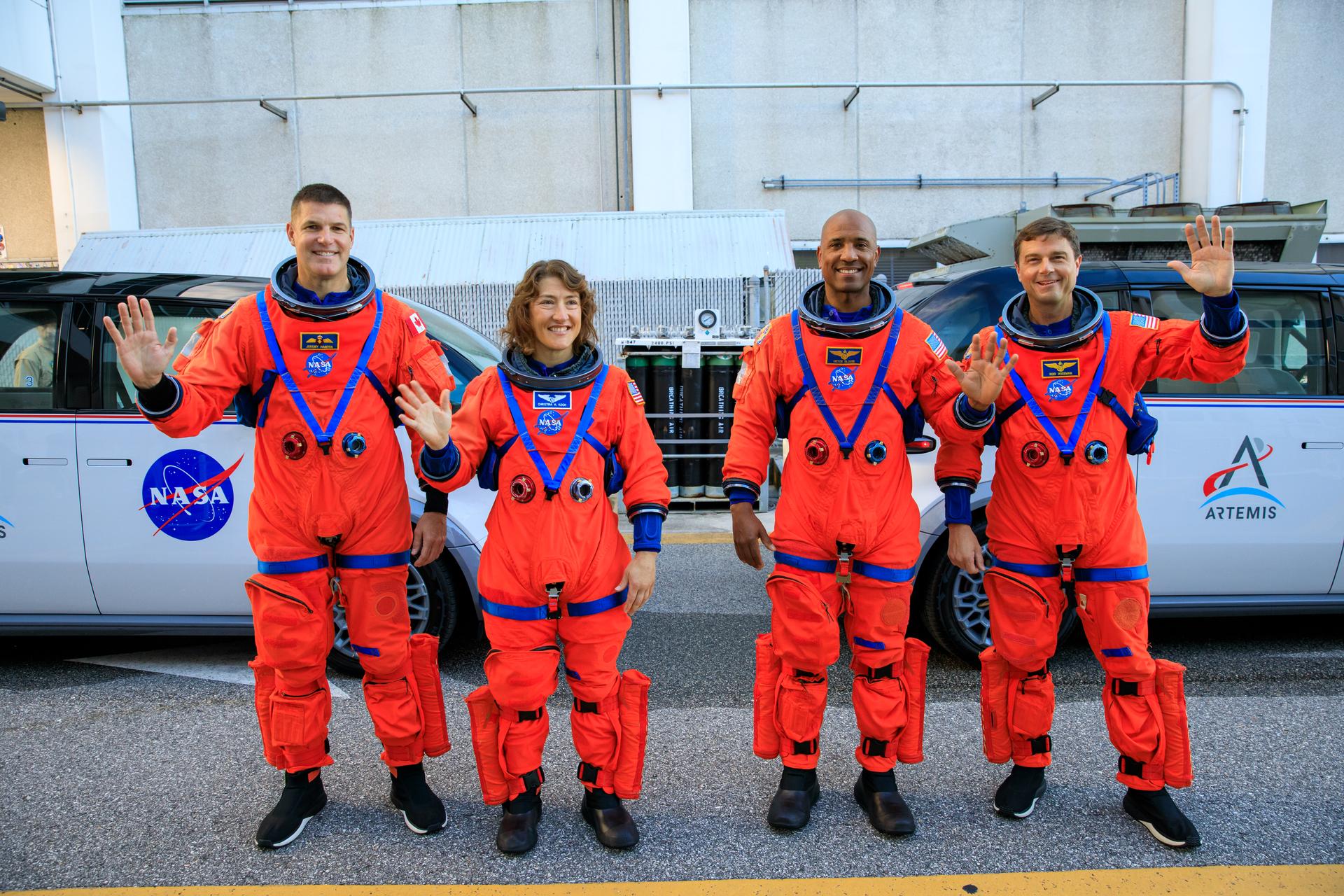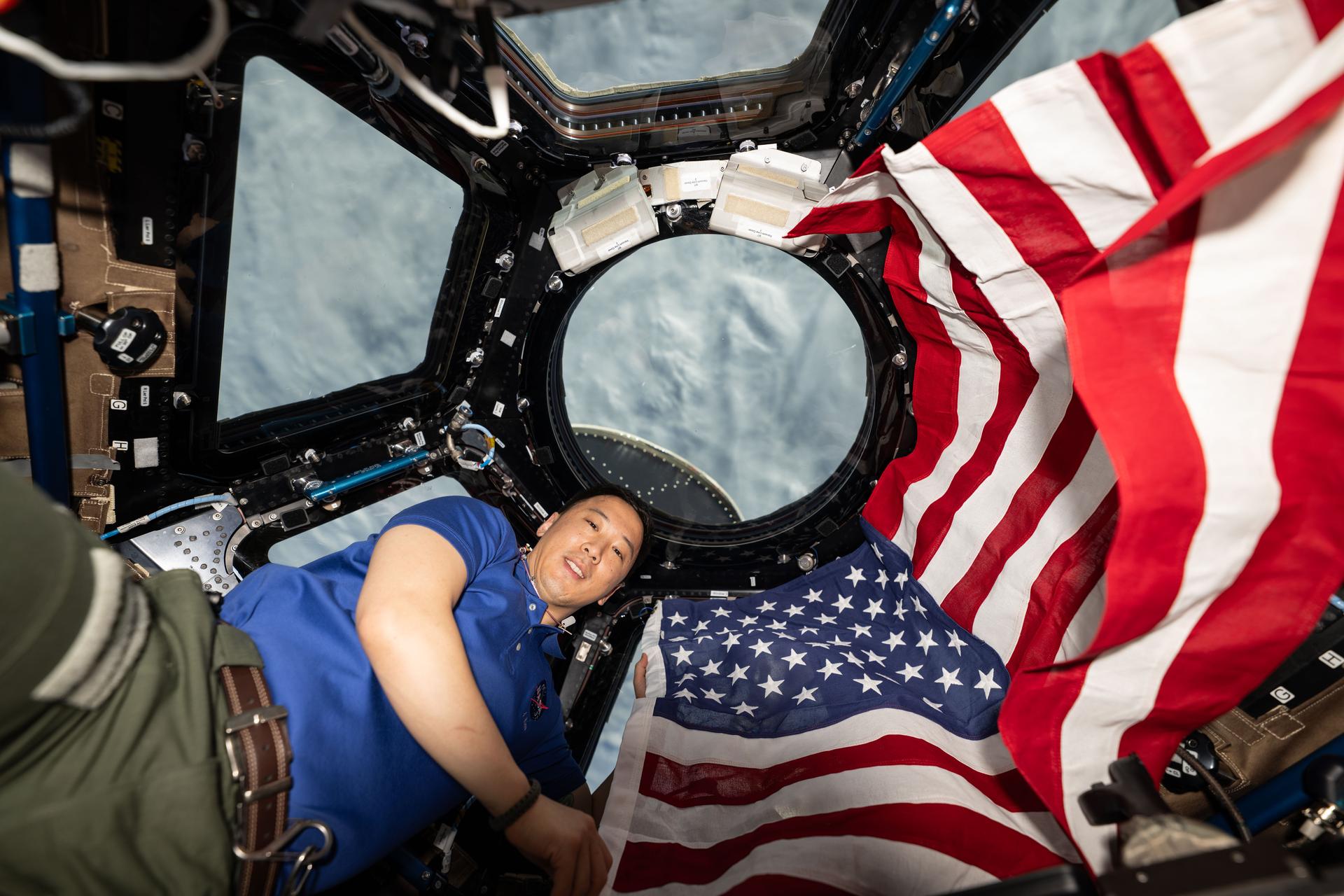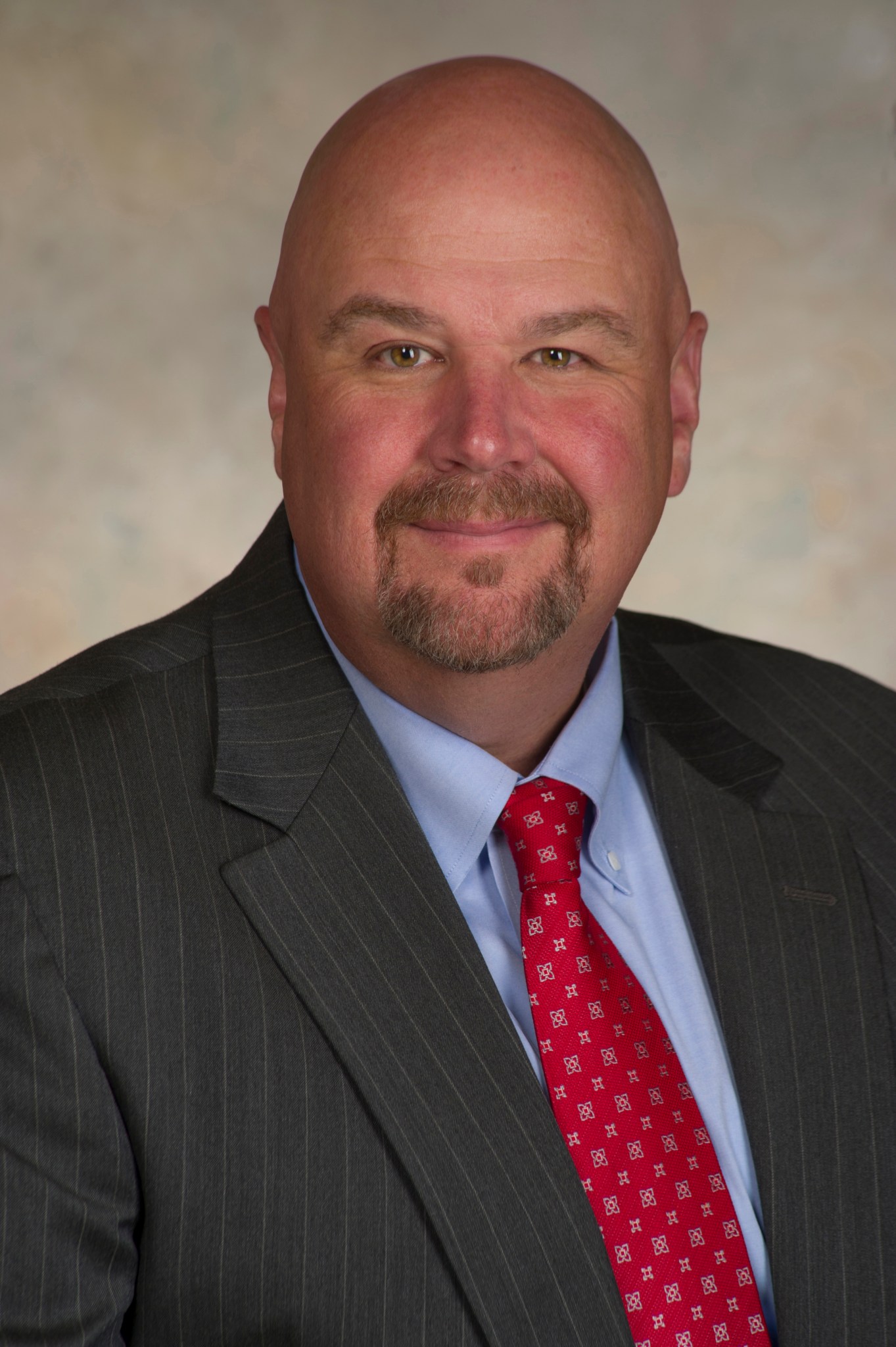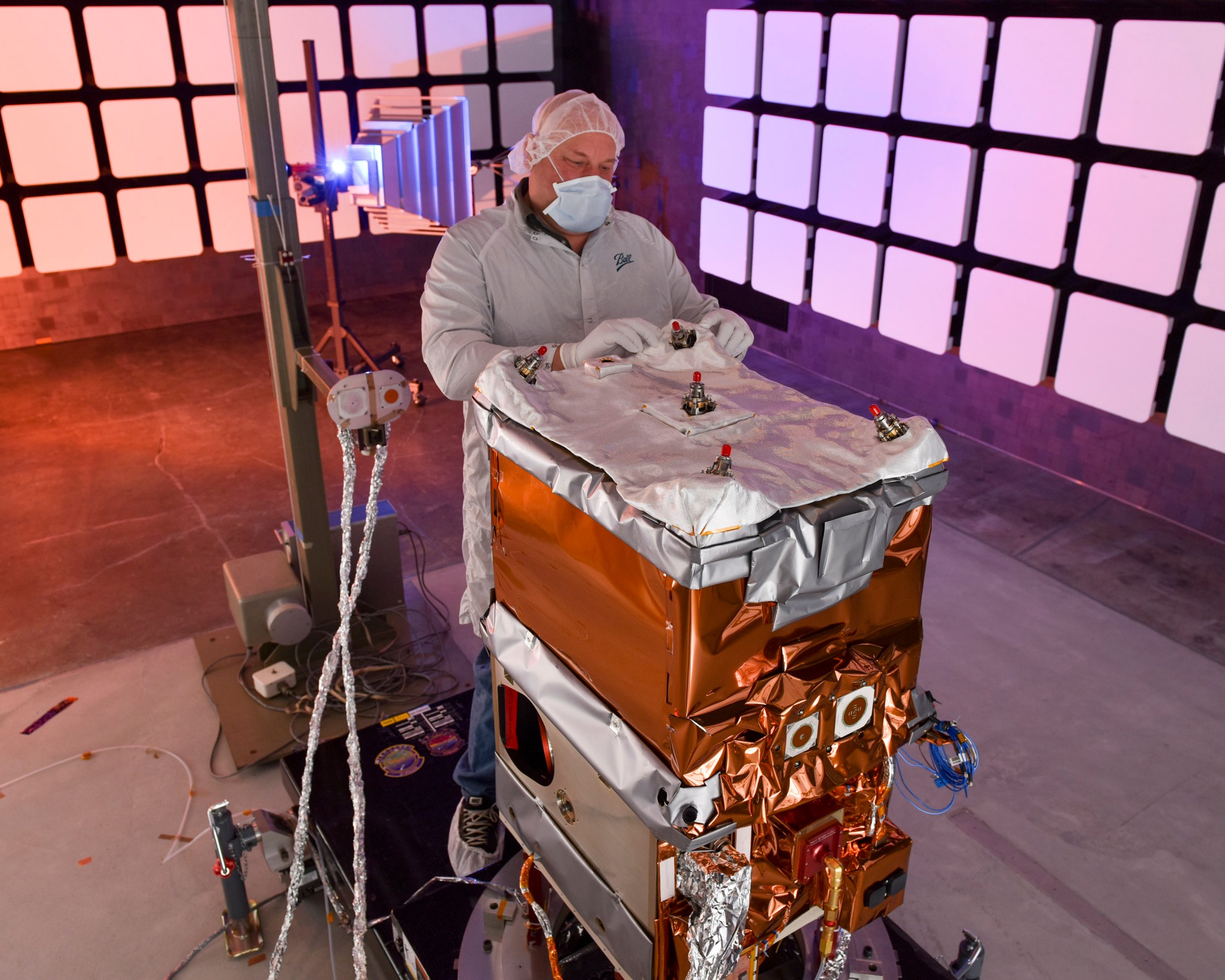In This Week’s Star
- NASA Names John Honeycutt Manager of Space Launch System Program
- Marshall Center to Conduct Active Shooter Emergency Exercise Oct. 22
- Green Propellant Infusion Mission Passes Spacecraft Integration Milestone, On Track for 2016 Launch
- Lightfoot Explains Business Services Assessment At Oct. 13 Marshall All Hands
- Marshall to Hold Second Annual ‘Resolution Round-Up’ Oct. 20
- Energy Awareness Key to Meeting Future Marshall Center Sustainability Mandates
- Michoud’s Miguel DeJesus Profiled in NASA Hispanic Heritage Month Video
- Community Service Days are Here and CFC Buses are Rolling Out
- This Week in NASA History: Apollo 7 Launches from Kennedy Space Center — Oct. 11, 1968
NASA Names John Honeycutt Manager of Space Launch System Program
NASA has named John Honeycutt manager for the agency’s Space Launch System Program. Now under development, SLS will be the most powerful rocket ever built — able to carry astronauts in NASA’s Orion spacecraft on deep space missions, including to an asteroid and ultimately to Mars.
As SLS program manager, Honeycutt leads a nationwide workforce of more than 4,200 civil servants and contractors with an annual budget of $1.7 billion, and is responsible for all facets of the program, including planning, procurement, development, testing, evaluation, production and operation of the integrated SLS.
Honeycutt, who had been deputy manager of SLS since November 2013, has helped lead the program through a series of milestones, including engine tests and in-depth element and system critical design reviews.
“John is an accomplished manager, and I’m pleased he is assuming this new leadership role in the development of SLS as we continue taking great steps forward in the continuous human exploration of space and on our journey to Mars,” said William Gerstenmaier, NASA’s associate administrator for the Human Exploration and Operations Mission Directorate.
Honeycutt succeeds Todd May, who in August was named deputy director of NASA’s Marshall Space Flight Center, where the SLS program is managed for the agency.
“NASA has benefited from John’s management and leadership skills in a number of programs at Marshall over the years, and I’m pleased he’ll be responsible for the continuing success of SLS, the next great vehicle to launch our human exploration space missions,” said Marshall Center Director Patrick Scheuermann.
Honeycutt began his NASA career at Marshall in 1999 after working for nine years as a contractor in support of the Space Shuttle Program, the International Space Station and other NASA programs. At Marshall, he has served as deputy manager and manager of the Space Shuttle External Tank Project; deputy manager of the SLS Program Stages Office; and SLS deputy chief engineer.
He earned a bachelor’s degree in mechanical engineering from the University of Alabama in Huntsville in 1990. He has received numerous awards, including a NASA Exceptional Achievement Medal, Management Space Flight Awareness Award, the Silver Snoopy Award and a Center Director’s Commendation.
For more about SLS, click here.
Marshall Center to Conduct Active Shooter Emergency Exercise Oct. 22
NASA’s Marshall Space Flight Center will conduct a full-scale, active shooter emergency exercise on the afternoon of Oct. 22. The event will involve a mock shooter and victims; simulated emergency radio traffic, alerts and announcements; Marshall, Redstone Arsenal and area emergency responders and response teams; and other activities to test Marshall’s emergency response and communications preparedness.
During the event, Emergency Notification System announcements, NIXLE text messages and other messages will be preceded by “EXERCISE.” Marshall team members will be encouraged to practice their “Run, Hide, Fight” safety training during the exercise, as well as sheltering in place.
The active shooter exercise is part of Marshall’s ongoing commitment to protecting employees – its most valuable assets. For more information, visit the MSFC Emergency Management ExplorNet page.
Green Propellant Infusion Mission Passes Spacecraft Integration Milestone, On Track for 2016 Launch
By Kenneth Kesner
The propulsion subsystem for NASA’s Green Propellant Infusion Mission has been integrated onto the spacecraft, moving the mission another major step toward scheduled launch in 2016.
GPIM prime contractor Ball Aerospace & Technologies Corp. in Boulder, Colorado, was able to integrate the green propellant propulsion subsystem in less than two weeks after receiving it from Aerojet Rocketdyne in Redmond, Washington. The propulsion subsystem will be the primary payload on the mission’s spacecraft — a Ball Configurable Platform 100 small satellite. System performance and environmental testing has already begun.
The mission will demonstrate the practical capabilities of a hydroxyl ammonium nitrate based fuel/oxidizer propellant blend, known as AF-M315E, developed by the U.S. Air Force Research Laboratory at Edwards Air Force Base in California. It offers higher performance but is safer to handle and easier on the environment or “greener” than traditional chemical fuels such as hydrazine currently used in spacecraft thrusters. It also requires fewer handling restrictions and has potentially shorter launch processing times, resulting in lowered costs.
Because the new propellant provides improved performance and volumetric efficiency compared to hydrazine, more of it can be stored in propellant tanks of the same volume, resulting in a 50-percent increase in spacecraft maneuvering capability for a given volume. It also has a lower freezing point than hydrazine, requiring less spacecraft power to maintain the propellant temperature. These characteristics make it ideal for a wide range of emerging small, deep space satellite missions.
“NASA is always looking for new technologies that also allow us an opportunity to improve safety and cost efficiency,” said Trudy Kortes, program executive for NASA’s Technology Demonstration Missions. “GPIM additionally affords us an opportunity to test an environmentally friendly fuel in space for the first time and there’s nothing more rewarding than a trailblazing mission.”
The GPIM propulsion subsystem on the satellite will be loaded with the low-toxicity AF-M315E propellant before launch. During the 13-month mission, researchers will conduct orbital maneuvers to demonstrate the performance of the propellant during attitude control shifts, changes in orbital inclination and orbit lowering.
“GPIM is the key mission to demonstrate a green monopropellant alternative to hydrazine,” said Jim Oschmann, vice president and general manager of Civil Space and Technology at Ball Aerospace. “Everyone in the industry, from NASA to our industry partners to green propellant suppliers, is eager to see 10 years of American-led research and development realized with this spaceflight mission.”
Three Department of Defense experimental payloads will also fly aboard the Green Propellant Infusion Mission spacecraft, which is scheduled for a launch to low-Earth orbit in 2016 in partnership with the Army Space and Missile Defense Command. Additional team members include the Air Force Space and Missile Systems Center at Kirtland Air Force Base, New Mexico, and NASA’s Glenn Research Center, Goddard Space Flight Center and Kennedy Space Center.
The mission is part of a portfolio of technology demonstration flight and ground projects led by NASA teams and industry partners across the country, managed by the Technology Demonstration Missions program office at NASA’s Marshall Space Flight Center.
Technology demonstration missions are sponsored by NASA’s Space Technology Mission Directorate, which is innovating, developing, testing and flying hardware for use in future missions. NASA’s technology investments provide cutting-edge solutions for our nation’s future.
Kesner, an ASRC Federal/Analytical Services employee, supports the Office of Strategic Analysis & Communications.
Lightfoot Explains Business Services Assessment At Oct. 13 Marshall All Hands

NASA Associate Administrator Robert Lightfoot, right, is joined on stage by NASA Deputy Associate Administrator for Mission Support Dan Tenney, left, and NASA Marshall Space Flight Center’s Associate Director Robin Henderson, as he addresses Marshall team members during an Oct. 13 All Hands meeting. Lightfoot and Tenney discussed the Business Services Assessment, which was designed to leverage the experience gained from the Technical Capabilities Assessment Team methodology and to improve agency business services. Like TCAT, the Business Services Assessment is committed to transparency and stakeholder input to inform decisions throughout all phases of the process. Video available on demand on Marshall’s Desktop TV.
Marshall to Hold Second Annual ‘Resolution Round-Up’ Oct. 20
By Brian C. Massey
On Oct. 20, NASA’s Marshall Space Flight Center will host a “Resolution Round-Up” in support of NASA’s second annual Conflict Resolution Month recognition.
The Office of Diversity and Equal Opportunity will team with Office of Human Capital; Ombudsman; Steven Miley, Marshall’s Anti-Harassment Coordinator; Office of Procurement; Protective Services Office; Office of Chief Counsel; and many more to share information with employees and answer questions on the various ways available at Marshall to resolve different types of conflict.
Open to all Marshall team members, the event will be held in Morris Auditorium, Building 4200, from 1-2 p.m.
“We all know that differences of opinion happen, and there are many expectations about how conflicts will be addressed,” said NASA Administrator Charles Bolden. “However, I believe that with effective conflict resolution mechanisms in place, we can continue to promote healthy working relationships and open communication among employees and between managers and employees.”
NASA’s Conflict Resolution Month provides an opportunity for the agency to increase team members’ understanding of peaceful and constructive ways to resolve conflicts of all types.
“I am positive conflict resolution will enhance teamwork, collaboration, employee engagement and productivity,” said Bolden. “In turn, the healthy work environments we create can only help to further advance our mission. I highly encourage all of you to be actively engaged in your center’s activities for this year’s Conflict Resolution initiative. I am confident that working together as one NASA — we will continue to remain an employer of choice across the federal government!”
For more information about the Office of Diversity and Equal Opportunity, click here, or visit their ExplorNet page.
Massey, an ASRC Federal/Analytical Services employee and the Marshall Star editor, supports the Office of Strategic Analysis & Communications.
Energy Awareness Key to Meeting Future Marshall Center Sustainability Mandates

By Kenneth Kesner
October is National Energy Awareness Month. Cedreck Davis thinks that’s great, but he’ll be needing everyone at NASA’s Marshall Space Flight Center to become much more aware of the energy they use every, single, day.
Davis has been manager of Marshall’s Energy and Water Program for more than 20 years. Since the program’s beginnings in 1985, consumption has been reduced by a total of 50 percent and Marshall has managed to meet a majority of federal and agency sustainability mandates — remarkable considering the age of many facilities and their location on the Army’s Redstone Arsenal, which can have an impact on efforts to meet federal goals.
The program’s success over the years is actually going make it more difficult to meet the newest set of federal requirements, which were issued on Oct. 1. Because Marshall has already addressed the most inefficient and wasteful infrastructure and processes, there is no “low-hanging fruit” left to pick. Davis said everyone at Marshall must become more involved in energy and water conservation for future success.
Even then it won’t be easy. Among other requirements, Executive Order 13693, “Planning for Federal Sustainability in the next Decade,” calls for an additional 25 percent total reduction in energy use over the next 10 years, and that 25 percent of “the total amount of building electric energy and thermal energy shall be clean energy, accounted for by renewable electric energy and alternative energy.”
“These are the toughest conservation goals Marshall has ever faced,” Davis said.
The center is already using solar panels at Building 4600 and at 4220, which opened in August 2014 and was the seventh facility to earn a LEED certification from the U.S. Green Building Council for Leadership in Energy and Environmental Design. It replaced Building 4202, which was more than 50 years old. Soon, construction will begin on Building 4221, which will basically be a duplicate of 4220 and will replace 4201 — another aging and inefficient building that will be demolished.
This “repair by replacement” is far more cost-effective than renovating and upgrading old buildings to new standards and codes. But Davis said while the plans to replace a few old buildings with modern, efficient structures that use at least some renewable energy sources will move Marshall in the right direction, they won’t make enough difference to push past the new sustainability goal line.
Over the next few months Davis and his team in the Facilities Management Office of the Office of Center Operations will write a 10-year plan detailing the steps Marshall will take to meet the year-by-year sustainability milestones set in the new executive order. After the plan is approved by Marshall leadership, employees will certainly hear a lot more about what to expect and how they can help.
But no one has to wait to get involved. Turning off a desk or task light, or powering down a conference room when leaving for the day and weekend may seem insignificant, but can add up to big savings when more people take the trouble, said Shannon Fulenwider, an architectural project manager and sustainability champion in the Facilities Management Office.
“Budgets are tight, but employee involvement is free conservation,” she said. “Everybody can make a difference to help make sure every dollar possible is available to NASA programs.”
Small steps are meaningful, Davis said. Marshall accounted for nearly $20 million of Redstone Arsenal’s $52 million in energy costs in FY 2015. If enough employees took action to result in just a 1 percent savings in utilities costs, that’s almost $200,000.
“I’ll take 1 percent of $20 million,” he said. “We want you to be comfortable. We want you to use what you need. But when you’re not using it, turn it off. We have to learn to waste nothing.”
Davis urges anyone with energy-saving suggestions, or who sees a conservation problem — broken motion-sensor light switches, leaking water lines, lights left on overnight and over weekends that aren’t needed for safety or work reasons — to report them on the program’s Web page: https://facgis.msfc.nasa.gov/energy/
A summary of Executive Order 13693 and links to the full text are available at:
Kesner, an ASRC Federal/Analytical Services employee, supports the Office of Strategic Analysis & Communications.
Michoud’s Miguel DeJesus Profiled in NASA Hispanic Heritage Month Video
Miguel De Jesus, a facility safety specialist at NASA’s Michoud Assembly Facility, explains why diversity is critical for mission success. Originally from San Juan, Puerto Rico, De Jesus is the focus of NASA’s Hispanic Heritage Month profile video. Managed and operated by NASA’s Marshall Space Flight Center, Michoud is the agency’s only large-scale advanced manufacturing facility. Hispanic Heritage Month is presented by the Office of Diversity and Equal Opportunity, which strives to promote diversity, equality and inclusion for all individuals.
Community Service Days are Here and CFC Buses are Rolling Out
The Combined Federal Campaign is the largest and most successful workplace fundraising campaign in the world. Team members at NASA’s Marshall Space Flight Center have an opportunity to be a part of its huge impact by touring local charities and volunteering for community service days.
Community service days provide opportunities for Marshall team members to volunteer their time and talents to help local nonprofit organizations. These service opportunities range from escorting athletes participating in the Special Olympics, to building wheelchair ramps for CASA of Madison County, to helping the Salvation Army with angel tree preparations. Each civil service employee may take up to four hours of excused leave for the hours worked on a CFC community service day project. For more information about community service days, contact Angela Lovelady or Labreesha Batey. To sign up for a community service day, click here.
In addition to volunteering time and talents, Marshall team members can participate in bus tours to learn how their CFC contributions help nonprofit organizations change lives in the local community. Upcoming bus tours include the Alabama Center of Military History and Veterans Memorial Museum, Food Bank of North Alabama, ChooseLife of North Alabama and many more. For more information about CFC bus tours, contact Keith Robinson or Kevin Depew. To sign up for a bus tour, click here.
This Week in NASA History: Apollo 7 Launches from Kennedy Space Center — Oct. 11, 1968
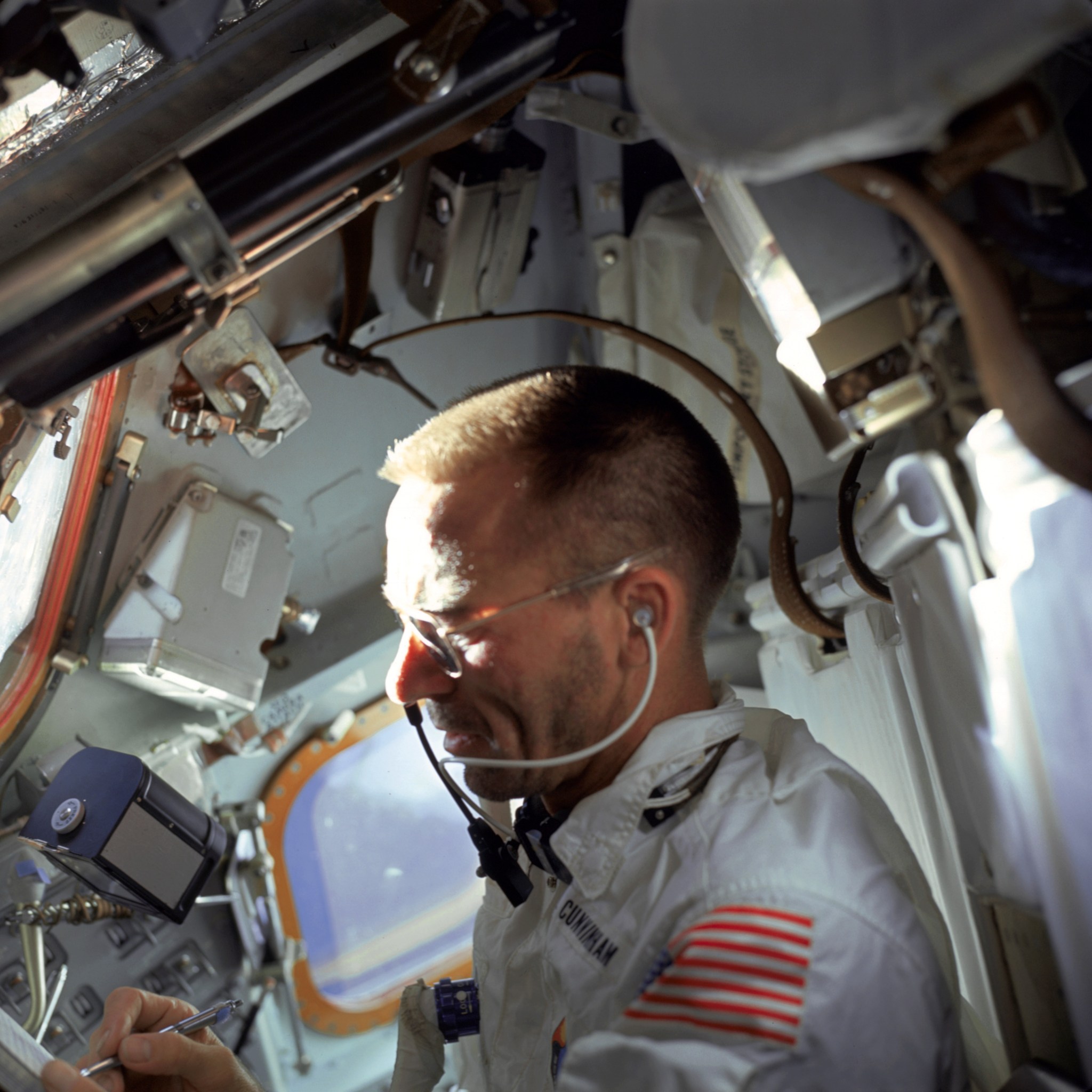
This week in 1968, Apollo 7, the first Saturn vehicle to carry a crew into space, launched from NASA’s Kennedy Space Center. Here, lunar module pilot Walter Cunningham writes with a space pen as he performs flight tasks on the ninth day of the mission. The Saturn launch vehicles were developed and built by NASA’s Marshall Space Flight Center. The NASA History Program documents and preserves NASA’s remarkable history through a variety of products — photos, press kits, press releases, mission transcripts and administrators’ speeches. For more pictures like this one and to connect to NASA’s history, visit the History Program’s Web page.

